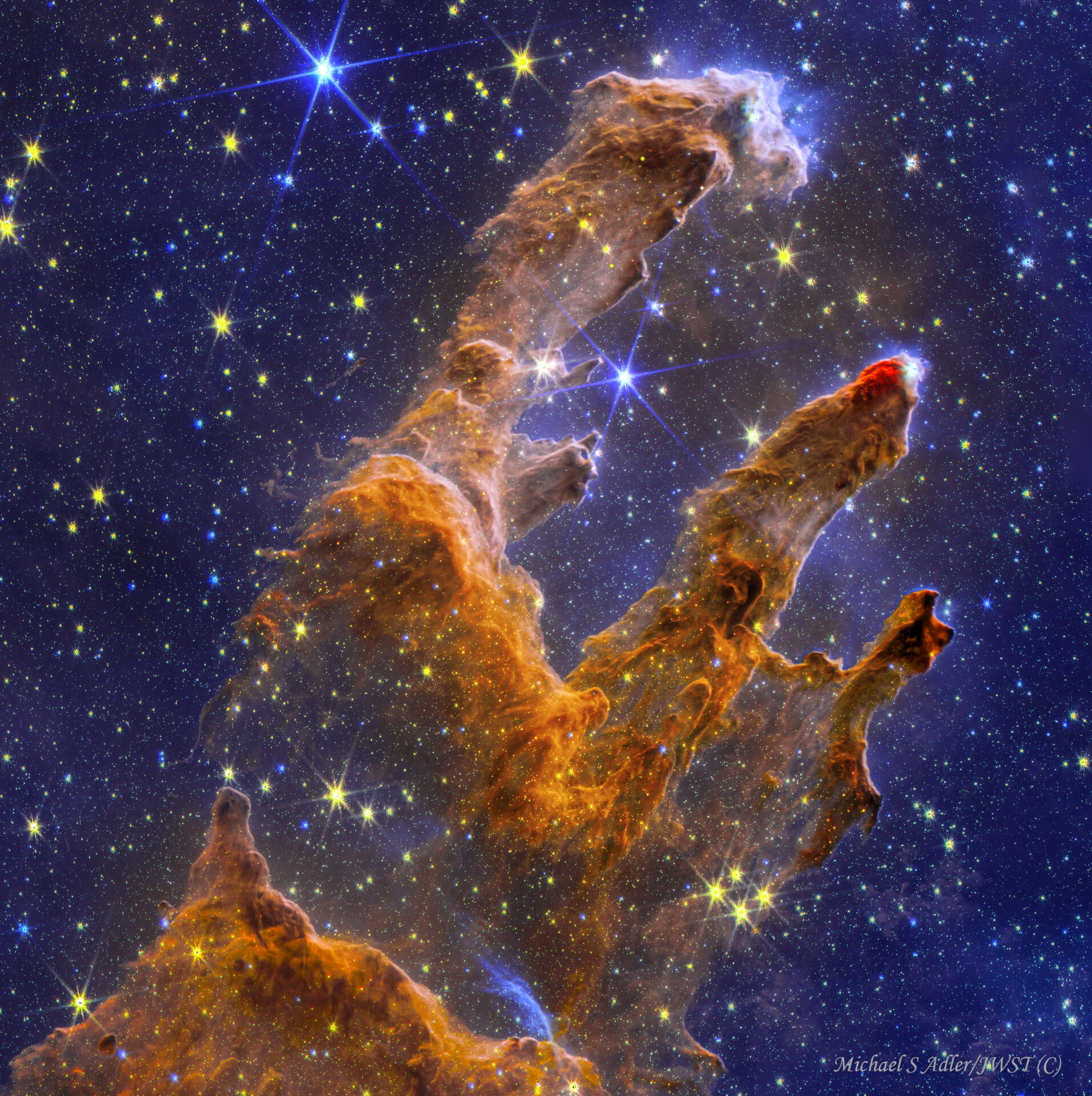Optics: James Webb Space Telescope
Mount: JWST
Camera: NIRCAM
Filters:444w,200w,090w,335m,187n
Dates/Times: Sept 2022
Location: Lagrange Pt 2
Exposure Details: NIRCAM inmages through 4.44u(w), 2.0u(w),0.9u(w), 3.35u(m), 1.87u(n) filters
Acquisition: Data downloaded from the Mikulski Archive for Space Telescopes(MAST) using FITS Liberator
Processing: Image alignment done with Pixinsight, PS2023 used to make RGB(444w,200w,090w) image and then adding 335m and 187n images using screen blending assigned 335m as Orange and 187n as Cyan
Pillars of Creation, Messier 16 (JWST)
Original price was: $65.00.$52.50Current price is: $52.50.
Pillars of Creation, Messier 16, JWST Every large telescope has imaged this scene, most famously the Hubble observatory in 1995 and 2014. Webb, with its infrared detectors, is able to see past much of the light-scattering effects of the pillars’ dust to examine the activity of the new-born suns. The crimson glow visible in the second and third pillars to the right comes from the energetic hydrogen molecules that result from jets and shocks. There are many new stars visible in these pillars that are yellow/red dots that were not seen in the Hubble image because they were hidden by dust and gas. These young stars are estimated to be only a few hundred thousand years old. Webb’s new view of the Pillars of Creation will help researchers revamp their models of star formation by identifying far more precise counts of newly formed stars, along with the quantities of gas and dust in the region. Over time, they will begin to build a clearer understanding of how stars form and burst out of these dusty clouds over millions of years.
The Hubble version of this image and one that I took can be seen by clicking on this link or by clicking on the next image on the web page.https://earthandskyimaging.com/product/pillars-of-creation-messier-16/ Looking at the Hubble image or my image shows dark pillars rising from the bottom to the top but without much detail on the inside. Webb’s near-infrared image shows the pillars, but they are semi-opaque and rusty red-colored giving evidence of star formation. This new image made by Michael Adler is a composite of data from 5 near infrared filters in the Webb telescope. The colors in the image comes from light through these filters, 4.44u Red, 2.0u Green, 0.9u Blue, 3.35u Orange, and 1.87u Cyan.
M16 and the Eagle Nebula lie about 7,000 light-years away, an easy target for binoculars or small telescopes in a nebula rich part of the summer Milky Way in the direction of the center of the galaxy.


